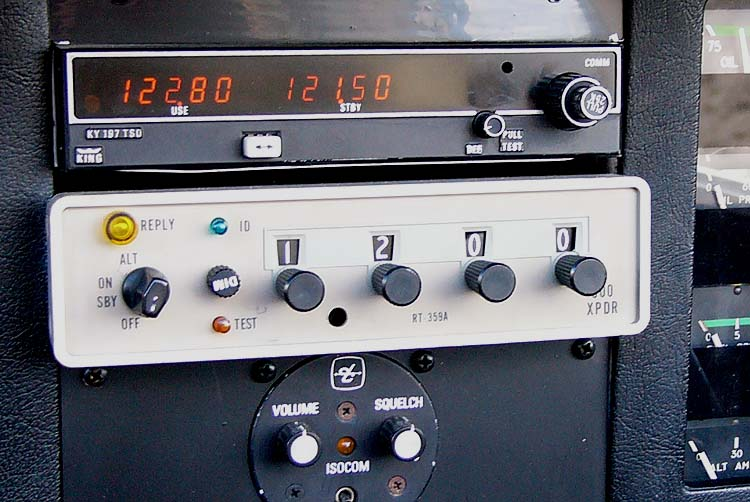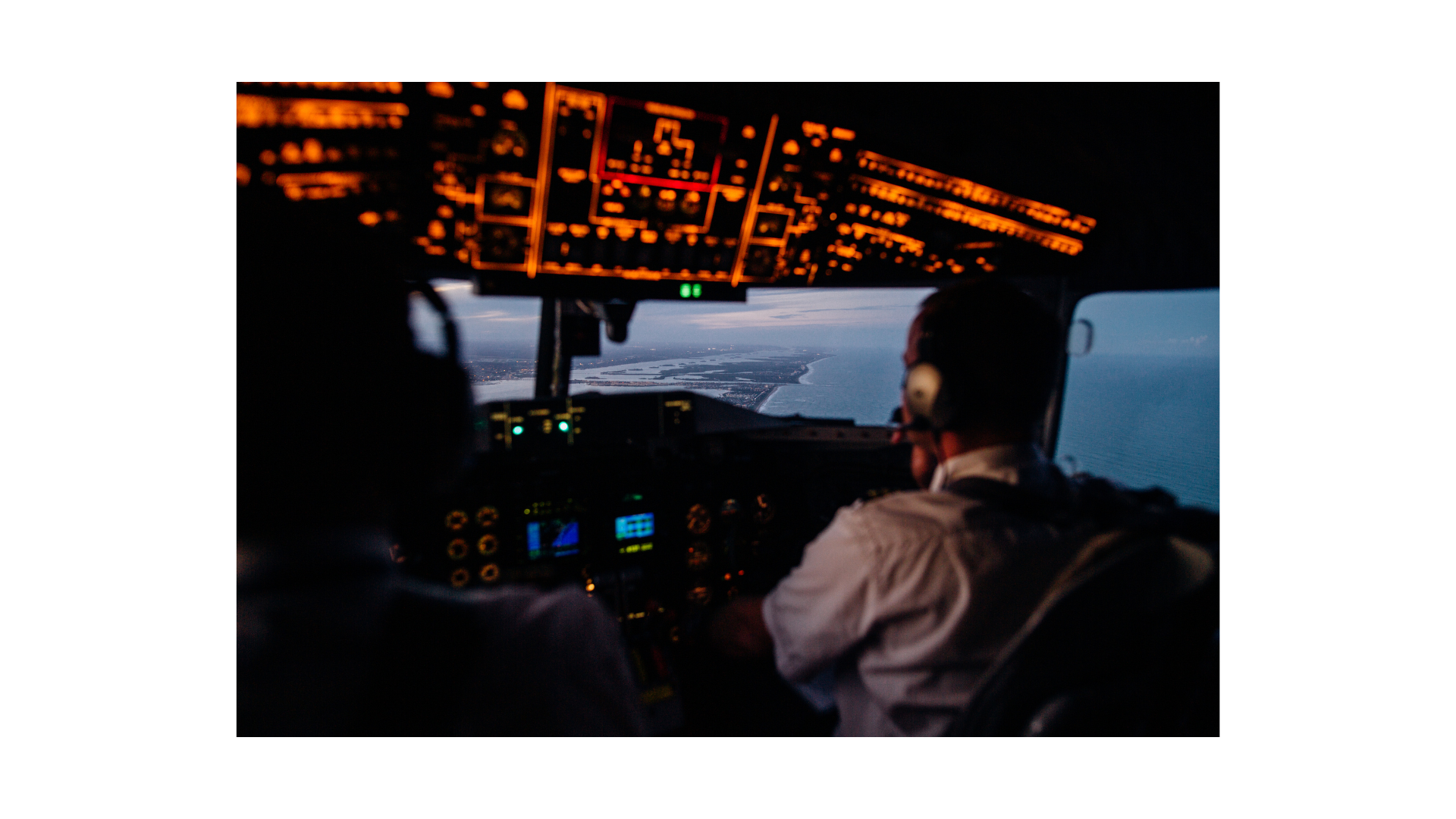Beyond the amazing aeronautical and thrust design developments we have pursued since the Wright brothers, arguably the next greatest development in aviation has been in electronic communications, including nonverbal communication such as the transponder. The privilege of talking over a radio or transponder keys and speaking directly and instantaneously with air traffic control (ATC) or even with other airborne pilots has enhanced safety and efficiency astronomically.
In addition to using voice communications, however, there are other ways pilots and airplanes can communicate with other elements of the aeronautical world. For example, airliners typically have ACARS (Aircraft Communications, Addressing and Reporting System) that can send automated messages back and forth between the airplane and the airline company, the airline manufacturer, and other entities.
Smaller, private planes don’t have anything like ACARS, but they still have a way to communicate certain things back and forth with ATC. What we are talking about here is the transponder. This avionic instrument combines the ability to transmit information and to respond to inquiry from Air Traffic Control (ATC) radar sites. Much of this communication is automated.
Basics of the Civil Aviation Transponder

Transponders exist in essentially all air vehicles (including, for example, not only airplanes, but helicopters, blimps, etc.), and some of those, especially in the military, operate in special modes that “regular,” small airplanes do not have. We will limit our discussion here to non-military (civil aviation) transponders.
Usually, the pilot inserts a specific code into the airplane’s transponder before flight. After the airplane is airborne, ATC can tell a pilot to change the airplane’s code mid-flight.
Most typically, transponder codes consist of four digits, and there are 4,096 different combinations of these four digits. The pilot determines which four-digit code to insert based on either the code that ATC has assigned the pilot, or, if the pilot is just going to fly under Visual Flight Rules (VFR), he or she will use the standard code of 1200.
In aviation, we almost never use the word, “code.” Instead, we call the four digits of coded signal a “squawk.” Indeed, the word, “squawk” is both a noun and a verb. For example, if ATC decides that you should change your current transponder code to 2641, and if you’re an airplane is a Cherokee whose call sign is abbreviated as 62V, this is what you’ll hear on the radio:
Cherokee 6-2-Victor, squawk 2-6-4-1.
Notice that the digits are stated individually. One would never hear a squawk given as “two thousand six hundred forty-one.”
Active Transponders
An active transponder, also known as an active tag, is a type of radio frequency identification (RFID) device that has an integrated battery for more power. This added power helps to increase the reading distance compared to a passive tag. Active transponders continually broadcast their own signal, which makes them particularly useful in situations where continuous monitoring or tracking is required. They are commonly used in location, identification and navigation systems for commercial and private aircraft, among other applications.
Passive transponders
A passive transponder is a type of radio frequency identification (RFID) device that does not have its own power source. Instead, it derives operating power from the radio waves emitted by an associated RFID reader. The passive transponder consists of a chip with a simple processor, an antenna, and permanent memory. When the reader emits radio waves, the passive transponder’s internal antenna creates a magnetic field, which powers the device and allows it to transmit data back to the reader. Passive transponders are commonly used in applications such as access control systems and animal tracking due to their small size and long lifespan.
Setting the Squawk

The pilot inserts the four digits of the squawk in different ways depending on how the airplane is equipped. A typical transponder’s four digits are set individually. There are knobs underneath each digit that allow the pilot to select any digit between zero and seven. On some technologically advanced aircraft, instead of separate knobs for the digits, there is a special screen that allows the pilot to set the digits without rotating knobs. In the instruments using knobs, each knob’s dialed-in digit appears directly above it.
Let’s talk about the manually-rotated-knob method of setting the code for a moment. There’s some special pilot technique here that a passenger would never imagine. Because there are some very special codes (see below) that involve the number, 7, pilots are trained to avoid passing by that digit when setting the codes by rotating those knobs. Let’s say that the first of the four digits you are supposed to set is a 6, but that the window currently shows a 1. In this case, the pilot is supposed to rotate through 2, 3, 4, 5, and finally 6, rather than going the other direction to 0 then 7, even though the latter technique would require only two “clicks” of the knob.
Enabling the Transponder Signal
Pilots are usually trained to turn the transponder on, so that it is able to send out and receive signals, once the airplane is on the runway and about to take off. After the airplane has landed and rolled off the runway, the transponder is usually turned to the standby position. However, in some technologically advanced aircraft, such as those with a G1000 avionics suite, the airplane knows when it has rotated off of the runway and will enable the transponder to transmit signals automatically at that time, and it also knows when the airplane has landed, and will disable the transponder at that moment. Technology does have its advantages.
Special and Secret Squawks
There are some universal codes that all pilots are required to memorize, and of course, they always mean the same thing. Some of these codes are:
1200 = Flying under VFR
7600 = Radio Failure
7700 = Emergency
7877 = I’m playing a trick on you here. Did you remember that transponders can only use digits 7? 7877 is not possible!
There are other secret codes that pilots are taught, and they are not to be shared with the general public (and that’s why they’re not listed in this article, of course). These tell air traffic control (ATC) certain things that passengers are not supposed to know, and in some cases, there communications signals that are special codes that only the military can use.
When Is the Transponder Used?
The standard operating procedure in aviation is that if you are in an airplane that has a transponder, that transponder should be turned on and squawking a code. Still, there are situations where it may not be required to do so. For example, in uncontrolled airspace (what pilots call “class G airspace”), it is not necessary to have a transponder were to have a transponder turned on unless one is under the mode C veil, which will be described in just a moment.
Transponder Settings
Each transponder has several settings, and these vary a little depending on the manufacturer and the installation. The STANDBY setting is pretty self-explanatory, as the ON setting.
There is a special mode which is set by putting the transponder in the ALT setting. This tells the transponder to send not only a signal with the four-digit code that the pilot has set, but also information on the altitude of the airplane. This is called Mode C, and it is particularly useful to ATC. Radar displays indicate an airplane’s transponder response; in Mode C, they also reveal the aircraft’s altitude above sea level. Actually, the resolution is only within 200 feet, but that’s still pretty good.
ATC needs extra information about airplanes that are flying in especially-highly-controlled airspace. This includes Class B (Bravo) airspace, and it exists around the busiest and largest airports such as (but not limited to) that in Atlanta, Los Angeles, and Chicago. Within 30 nautical miles of these airports, all airplanes must squawk Mode C. That’s called the “mode C veil.” Airplanes whose transponders cannot squawk mode C simply do not have permission to fly that close to class B airports.
Summary

Transponders are used to give information to ATC about an airplane’s location in space and in most cases its altitude as well. This instrument can identify an airplane uniquely and serves the main purpose of helping ATC keep airplanes separated, all in the service of safety in air travel.
Ready to soar in your aviation career?
Mr. Matthew A. Johnston has over 23 years of experience serving various roles in education and is currently serving as the President of California Aeronautical University. He maintains memberships and is a supporting participant with several aviation promoting and advocacy associations including University Aviation Association (UAA), Regional Airline Association (RAA), AOPA, NBAA, and EAA with the Young Eagles program. He is proud of his collaboration with airlines, aviation businesses and individual aviation professionals who are working with him to develop California Aeronautical University as a leader in educating aviation professionals.

There are Apps available for personal cellphone users to assist them with tracking of their loved ones or friends flights. Does pinging flight transponders from cellphones affect the communications between the pilot and ATCs?
Those apps will not talk directly to the transponder: a mobile phone does not have radio capacity on the radar frequency that the transponder uses. They work by interrogating an online feed that is provided either by the airline or by ATC. Ultimately that data comes from radar and transponder, but is provided as a by product of transmissions that were going to happen anyway. So don’t feel you are endangering your friend’s flight 🙂
What happens when the transponder is turned off, can someone add back the data block on radar and highlight the target for the military?
Good question! ATC in most areas use Airport Surveillance Radar which is a rotating antenna mounted on a tower that transmits electromagnetic waves that are then reflected back from the surface of the aircraft up to 60 miles away even when the aircraft does not have a transponder.